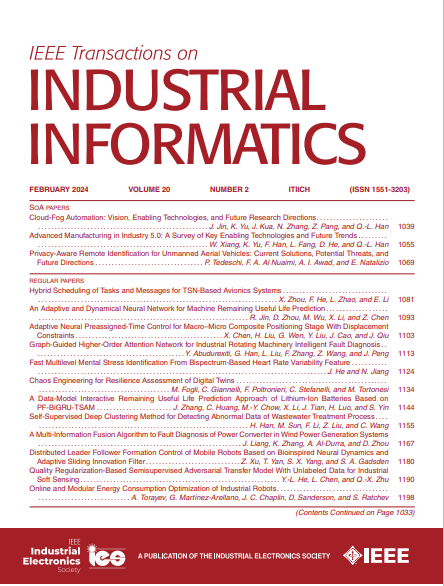PUTrack:通过渐进提示改进水下目标跟踪
IF 9.9
1区 计算机科学
Q1 AUTOMATION & CONTROL SYSTEMS
引用次数: 0
摘要
现有的水下跟踪方法可分为两种模式:一种是“先增强后跟踪”,即先提高输入图像的质量,然后采用露天跟踪器;第二步,“跟踪-然后处理”——首先使用露天跟踪器,然后校准预测盒。这些方法在模块之间缺乏统一的目标,影响了跟踪性能。为了克服这个问题,我们提出了一种新的端到端框架,称为提示水下跟踪(PUTrack)。它通过在现有露天跟踪器的侧面部署一组水下提示器,并将生成的提示逐层注入编码器,使露天跟踪器适应特定场景(水下)跟踪任务。在各种水下跟踪数据集上的实验表明,该方法仅引入0.6 M个可训练参数(占总参数的0.4%),即可显著提高跟踪器的水下性能。此外,为了推动水下跟踪的发展,我们构建了一个高质量的水下跟踪数据集,该数据集人工标注了139k帧,超过了以往水下跟踪数据集的总帧数。它提供了90个具有丰富挑战属性的测试集和200个不同种类的训练集。本文章由计算机程序翻译,如有差异,请以英文原文为准。
PUTrack: Improved Underwater Object Tracking via Progressive Prompting
Existing underwater tracking methods can be categorized into two paradigms: first, “enhance-then-track”—first enhancing the quality of the input image, then employing an open-air tracker; second, “track-then-process”—initially using an open-air tracker, followed by calibrating the prediction box. These methods that lack unified objectives among the modules impair tracking performance. To overcome this, we propose a novel end-to-end framework called prompting underwater tracking (PUTrack). It adapts the open-air tracker to the scenario-specific (underwater) tracking task by deploying a set of underwater prompters at the lateral side of an existing open-air tracker, and injecting the generated prompts layer-by-layer into the encoder. Experiments on various underwater tracking datasets demonstrate that the method significantly improves the underwater performance of the tracker by introducing only 0.6 M trainable parameters (0.4% of total parameters). Moreover, to drive the development of underwater tracking, we construct a high quality underwater tracking dataset that is manually annotated with 139 k frames, which exceeds the total number of frames in previous underwater tracking datasets. It provides 90 test sets rich in challenge properties and 200 training sets of diverse kinds.
求助全文
通过发布文献求助,成功后即可免费获取论文全文。
去求助
来源期刊

IEEE Transactions on Industrial Informatics
工程技术-工程:工业
CiteScore
24.10
自引率
8.90%
发文量
1202
审稿时长
5.1 months
期刊介绍:
The IEEE Transactions on Industrial Informatics is a multidisciplinary journal dedicated to publishing technical papers that connect theory with practical applications of informatics in industrial settings. It focuses on the utilization of information in intelligent, distributed, and agile industrial automation and control systems. The scope includes topics such as knowledge-based and AI-enhanced automation, intelligent computer control systems, flexible and collaborative manufacturing, industrial informatics in software-defined vehicles and robotics, computer vision, industrial cyber-physical and industrial IoT systems, real-time and networked embedded systems, security in industrial processes, industrial communications, systems interoperability, and human-machine interaction.
 求助内容:
求助内容: 应助结果提醒方式:
应助结果提醒方式:


